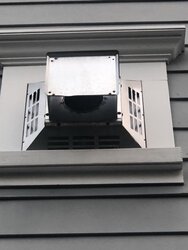We’ve been in this home for 4 years and have rarely had a functioning fireplace. To make a long story short, many of the issues have been repaired but we still have an issue with the fireplace main burner and pilot going out. I do think happens more regularly during windy conditions. I’m attaching a picture of the vent configuration.
Anything you see here that can be improved?
thanks in advance. The pic inserted sideways for some reason. I am looking at it from below.
Anything you see here that can be improved?
thanks in advance. The pic inserted sideways for some reason. I am looking at it from below.
Attachments
Last edited by a moderator:


